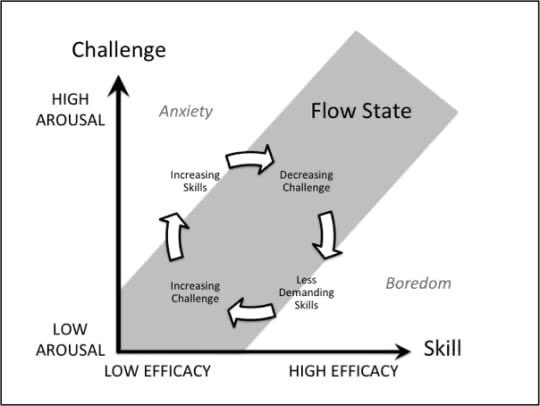Great question...
“OK. I get the theory. But say I was to wander into a company that was more product and design oriented, agile-lean-design-thinking-or-whatever, with teams working in this different way...
...what would I actually see and hear? What’s different?”
“OK. I get the theory. But say I was to wander into a company that was more product and design oriented, agile-lean-design-thinking-or-whatever, with teams working in this different way...
...what would I actually see and hear? What’s different?”
...you might stumble on a team having a more open-ended conversation with a customer (real customer, out there in the world customer).
...you might stumble on a designer and developer pairing, working in real-time, maybe jumping quickly on a call/Zoom to test something
...you might stumble on a designer and developer pairing, working in real-time, maybe jumping quickly on a call/Zoom to test something
...you might overhear people talk about feedback and data from something offered up to customers recently, and listen to them figure out how they’ll incorporate that feedback into their work
...you’ll see more conversations, more visible problem solving, more collaboration
...you’ll see more conversations, more visible problem solving, more collaboration
...you’ll overhear “front-line” folks with an in-depth understanding of the business, the customers, etc. It might seem surprising that they know this much.
...you’ll hear more CHOICE and more decisions. Less seems decided upfront. People are actively figuring things out.
...you’ll hear more CHOICE and more decisions. Less seems decided upfront. People are actively figuring things out.
...role boundaries will seem less defined. A developer jumps on a call, a designer meets w/someone in finance, a PdM facilitates a great meeting. But there’s a ton of professional respect.
...you’ll see more visible celebration about real things happening with the product.
...you’ll see more visible celebration about real things happening with the product.
...there will be a visible and audible difference in trust and confidence conveyed in meetings.
...more “flow”. This seems intangible but you can actually sense this when you’re in the room. People aren’t bored. They aren’t anxious. They are “in the zone” but also aware.
...more “flow”. This seems intangible but you can actually sense this when you’re in the room. People aren’t bored. They aren’t anxious. They are “in the zone” but also aware.
....you’ll hear more common language between “the business” types and the “product” types. So less translation needed. This might pop up when talking about customers/users, about experiences, journeys, needs, product value.
So if listening, the conversations sound smoother.
So if listening, the conversations sound smoother.
....more “let’s give it a try” (and other variations). Specifically, you’ll hear language that is more open to things not working as expected, but with a bias to act and see what happens.
Hard to describe, but language is less directive and more curious (and action oriented).
Hard to describe, but language is less directive and more curious (and action oriented).
...fewer power dynamics baked into language and rituals. More specifically, you’re more likely to hear conversations that seem more balanced in terms of power.
Less: “We need more accountability!”
More: “How can I help?” Or “Let’s chat about what hats we want to wear here...”
Less: “We need more accountability!”
More: “How can I help?” Or “Let’s chat about what hats we want to wear here...”
This one is super tangible.
...you’ll hear less distrust (and flat out antagonism). Less “Ugh... tech is dropping the ball again” & “Oh, those salespeople are idiots!” More...”thank you for building such a great product that makes selling easier” & “I appreciate their feedback!”
...you’ll hear less distrust (and flat out antagonism). Less “Ugh... tech is dropping the ball again” & “Oh, those salespeople are idiots!” More...”thank you for building such a great product that makes selling easier” & “I appreciate their feedback!”
Cliche but less direct blame in general.
...you’d overhear people talking about systems and dynamics (“sounds like Joe wasn’t set up for success and we should probably try to help that group”), and less “Joe sucks at his job”.
...you’d overhear people talking about systems and dynamics (“sounds like Joe wasn’t set up for success and we should probably try to help that group”), and less “Joe sucks at his job”.
...you’ll overhear more choice-based language. People actually making decisions (vs. interpretations of other people’s decisions).
This sounds vague, but anyone who has struggled with a friend who wants to make all the plans (more like needs to) will understand.
This sounds vague, but anyone who has struggled with a friend who wants to make all the plans (more like needs to) will understand.
...more tangible, sensory, relatable progress.
This is a gut level sensation.
Related to flow. But have you ever been on a team that for months was saying “yeah, going OK”, but it didn’t feel that way?
Or the friend talking about organizing their garage for 6 months?
This is a gut level sensation.
Related to flow. But have you ever been on a team that for months was saying “yeah, going OK”, but it didn’t feel that way?
Or the friend talking about organizing their garage for 6 months?

 Read on Twitter
Read on Twitter



